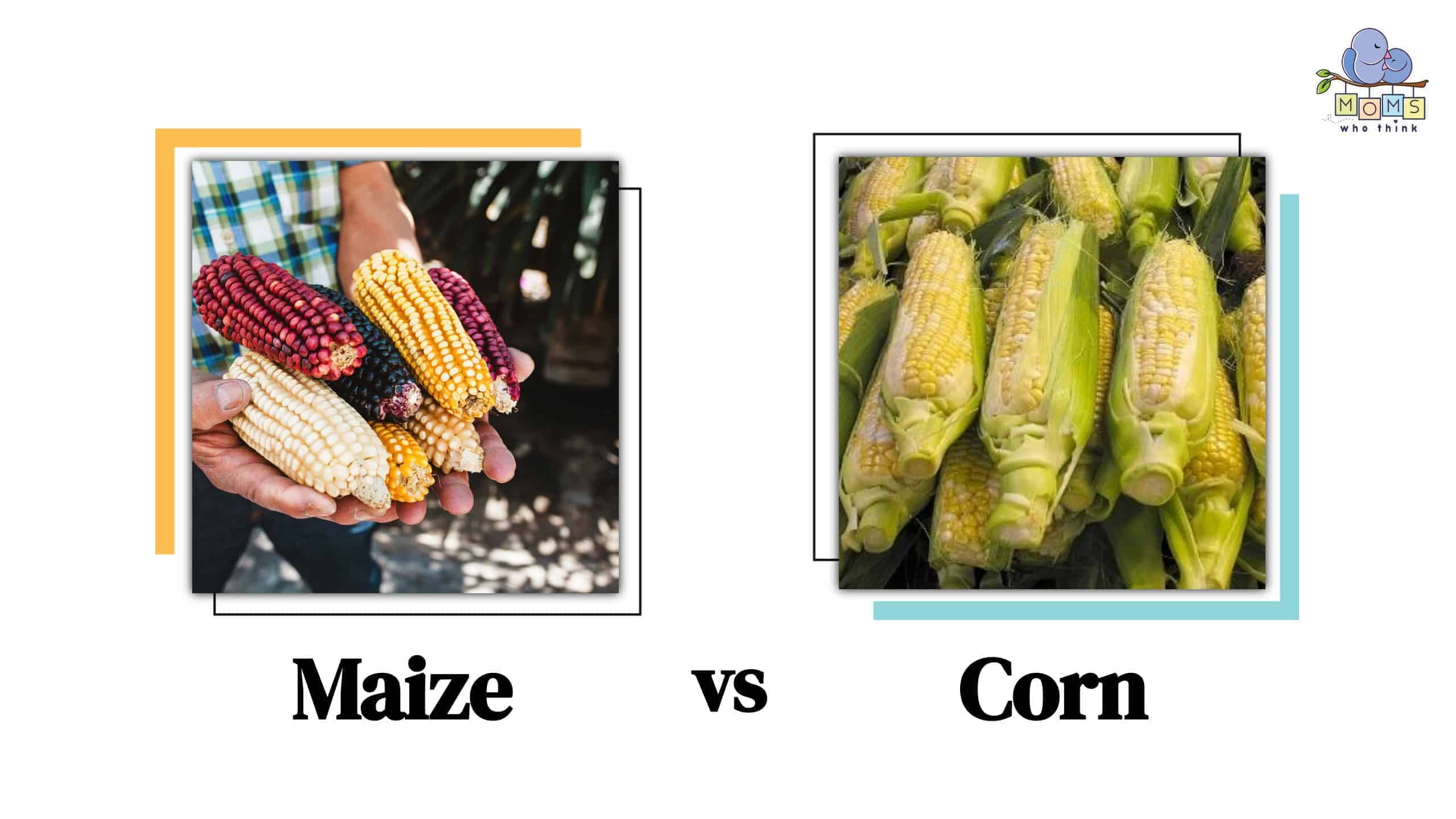The distinction between corn and maize has piqued your interest, even though you've heard both names used synonymously. The specific cereal grain is referred to by the words corn and maize. While maize is used in British English, corn predominates in the vocabulary of North American English speakers. The plant they allude to is the same, even though the words differ.
Here are several differences between them and situations where it could be appropriate to use the term maize rather than corn.
Maize vs. Corn; Where They Differ
The primary distinction between corn and maize is how they are physically different. While maize is normally yellow, blue, or green, corn is typically yellow, white, or red. Unlike corn, maize has smaller seeds.
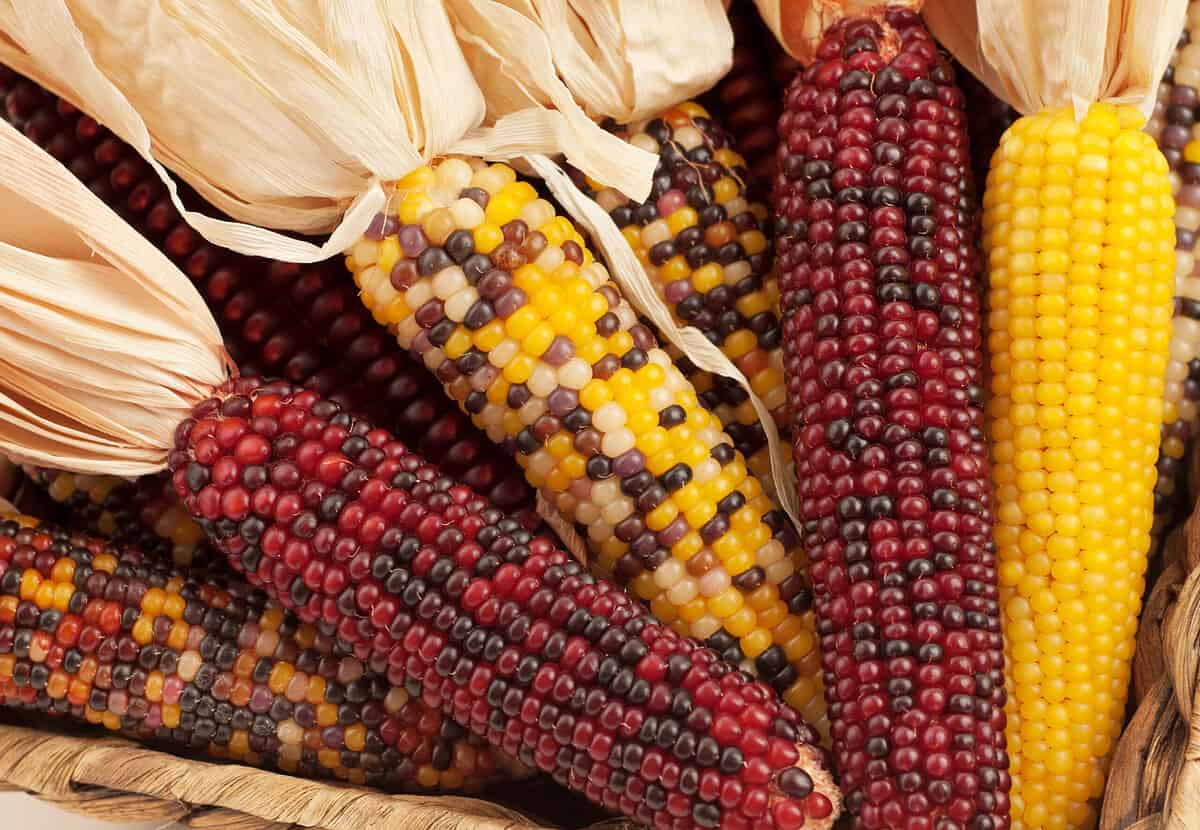
©Candace Hartley/Shutterstock.com
A simple method to understand the distinctions between the two terms is: All corn is corn, but not all maize is corn. Corn can refer to various grains depending on where you are, but maize always refers to the same crop, which we typically name corn. Other differences include;
Dictionary Meaning
Maize is defined as the Central American cereal plant that produces rows of big grains on a cob. It's among the many types are several that are used to make corn oil and cattle feed.
In Scotland and England districts, corn predominates over other cereal crops, such as oats or wheat or wheat.
Differences among Countries
Spain is where the word “maize” comes from. Columbus' expedition arrived at an island in San Salvador in 1492. The Taino people, who called the island home, referred to their primary crop as “mahiz,” which means “source of life.” The Spanish grabbed samples of this enormous grain and dispersed the crop. It was a significant grain laid out in rows on a cob. The English word “maize” we use today is derived from that one.
Corn primarily refers to maize in the United States, Canada, Australia, and New Zealand. Except for these nations, “corn” refers to any cereal crop or indigenous food. English people typically use the word “corn” to describe the most common grain in their area.
Kitchen Contexts
Rarely is the word “maize” used to describe foods made from maize grains such as baby corn, sweet corn, corn on the cob, corn flour, cornflakes, and popcorn, which typically use corn as an ingredient.
Scientific and Technical Context
Unlike corn, which refers vaguely to Zea mays, maize specifically refers to Zea mays and is therefore used in formal, scientific, and international contexts. Additionally, agricultural organizations and research facilities use the term “maize.” The yield from the field is referred to as maize (Zea mays).
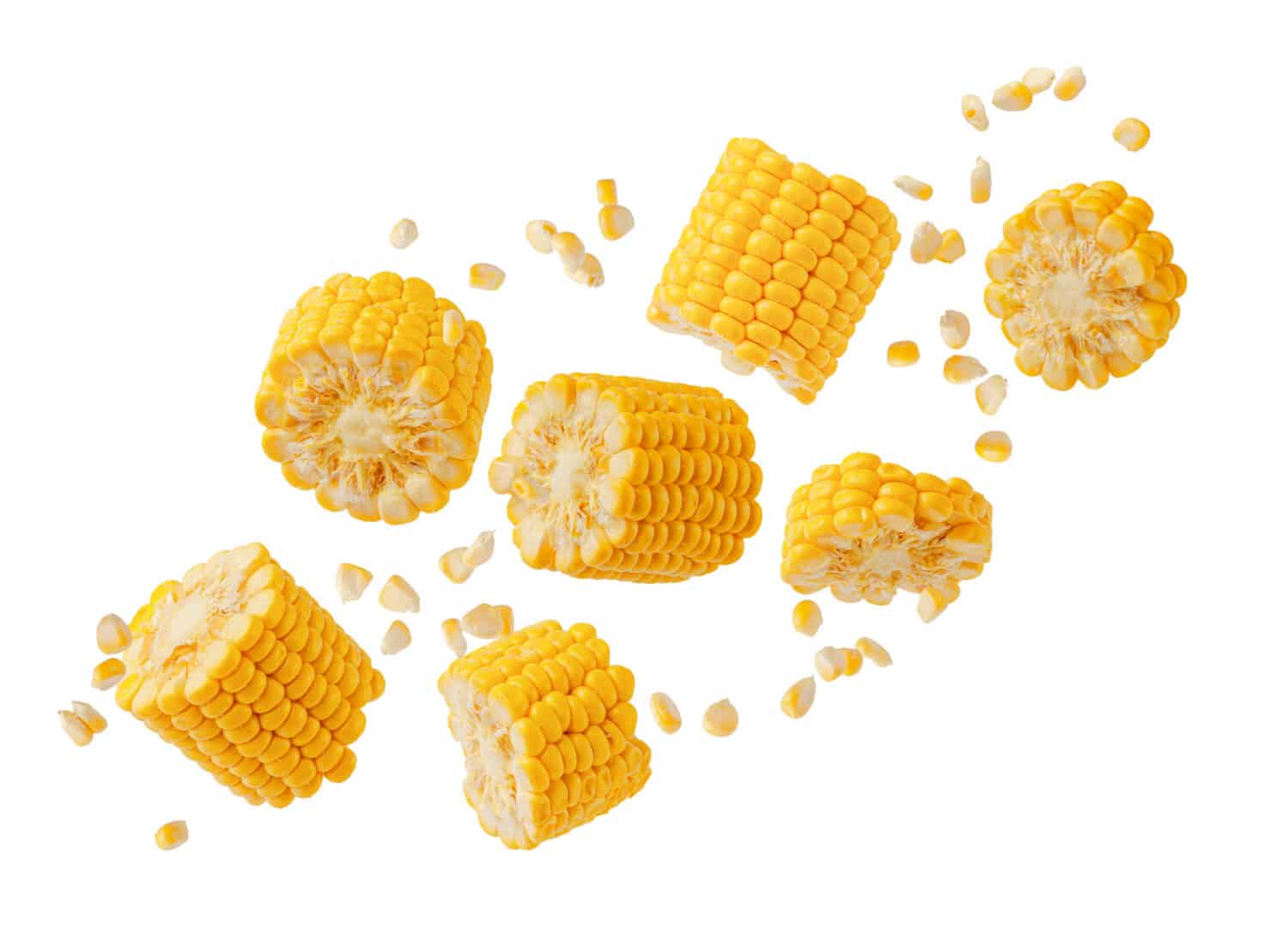
©Tetiana Tychynska/Shutterstock.com
In formal, scientific, and international uses, corn is not a favored term. The item on your plate is referred to as corn.
What Can I Substitute For Maize Flour?
Since corn flour and maize flour are both manufactured from corn, corn flour is typically the best alternative to maize flour in most recipes.
However, remember that corn flour will provide different outcomes from maize flour because it frequently gives food a gritty texture.
What Can I Substitute For Corn Flour?
Rice Flour
Rice flour is an excellent alternative to corn flour, mainly used as a thickener or in sweet baked goods. Rice flour shouldn't be used in recipes that call for a crunchy exterior because it is a little stickier and finer than corn flour.
Rice flour is a beautiful taste enhancer in recipes like soups or muffins due to its sweetness. Use twice as much rice flour as corn flour in a 2:1 ratio. Best used in baked foods and as a thickening agent.
Whole Wheat
All-purpose flour and whole wheat flour are also great substitutes for maize flour. Since these flours include gluten; therefore, not all bakers and home cooks may choose to use them.
All-purpose or white flour is the standard substitute for maize flour since it is readily available. Another standard option is whole wheat, mainly because it has significantly more nutrients than its white competitors.
White flour will not alter the flavor or texture of the dish. On the other hand, using whole wheat flour might give your cuisine a malty taste. It may not fit your ideal flavor composition even though the flavor is not unfavorable.
Use twice as much whole wheat flour as all-purpose flour, or a 2:1 ratio, instead of the recipe's specified amount of corn flour.
Guar Gum
Another affordable and healthful solution that is excellent for thickening is guar gum. When substituting guar gum for corn flour in a sauce or soup recipe, you must only use a tiny amount. You also benefit from guar gum's digestive advantages.
Guar gum can be used instead of corn flour in any recipe, but you will only need a significantly smaller amount. Start with 1/8 of the specified amount of cornflour (3/8 of a teaspoon is 1/8 of a tablespoon).
Sorghum Flour
Sorghum flour is rapidly gaining popularity, especially among advocates of healthy diets. This protein and antioxidant-rich flour is produced from sorghum grains.
Additionally, it has vital nutrients, including magnesium, phosphorus, and vitamin B. It is preferable to use sorghum flour as a thickening agent rather than a breading or coating. As a 1:1 swap for corn flour, use sorghum flour.
Ground Flaxseeds
Try flaxseed if you're looking for a nutrient-dense alternative to corn flour. Since the flavor is a little bit bitter, you might want to increase the amount of flavoring in your dish.
To replace one cup of corn flour, use one-half tablespoon of ground flaxseed with two tablespoons of water.
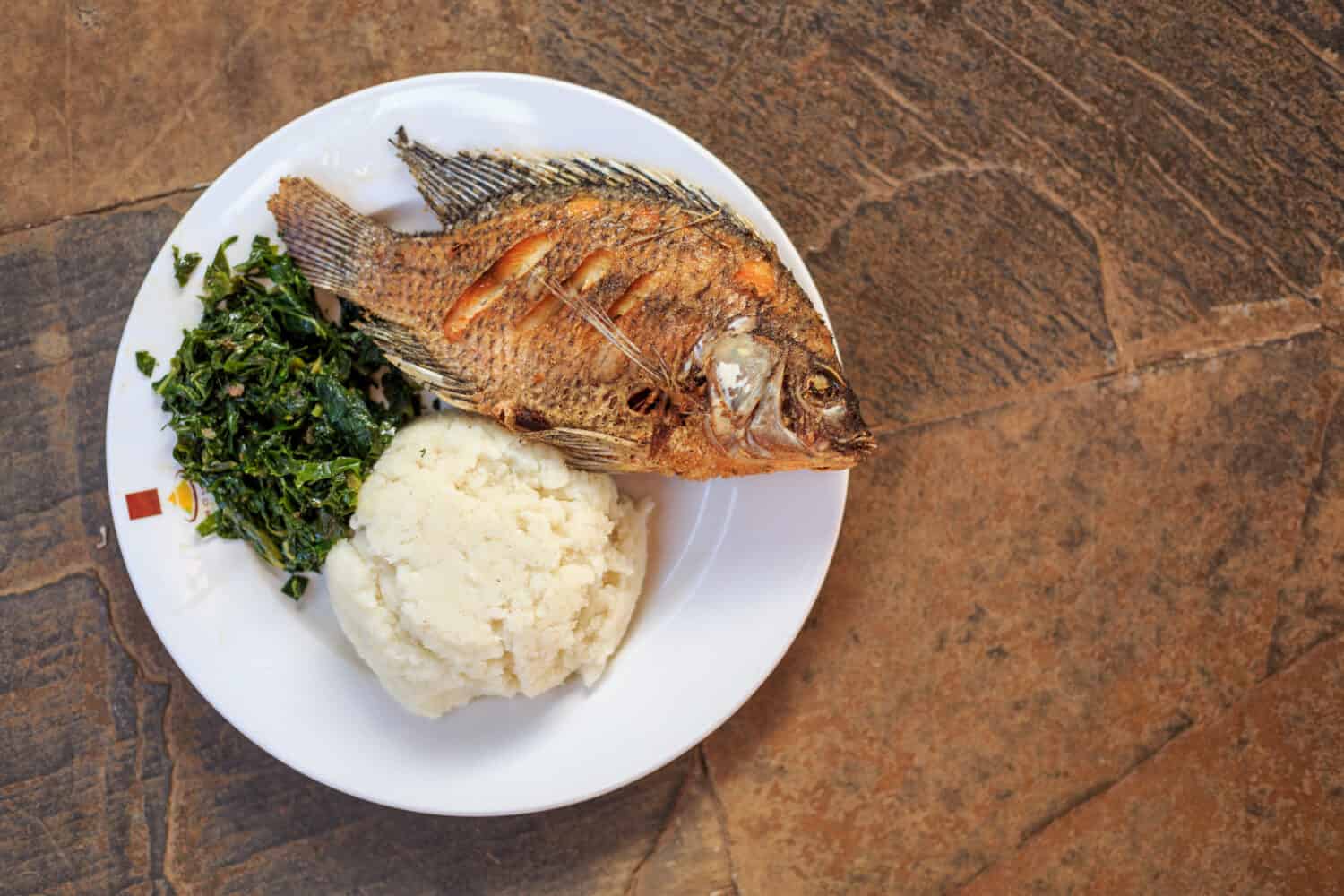
©Sopotnicki/Shutterstock.com
Arrowroot Powder
Another well-liked starch that can be substituted for corn flour is arrowroot. It can also improve your recipe's flavor profile, making it one of the most excellent options to have on hand.
Another great option for thickening that is also a starch is arrowroot, though it might not work as well in baked items or as a coating. In soups and sauces that will be served right away, substitute this. Replace the flour with 1:1 corn flour.
What Is Maize?
The native Taino people shared their primary food source with Christopher Columbus and his crew when they stopped by an island near the northern Antilles. What we now refer to as maize was their primary source of sustenance, but Tahino farmers referred to it as “mahiz,” which in their language means “source of life.” Mahiz eventually became known as maize.
Since it solely refers to one specific grain and cannot be mistaken for other food sources, the name “maize” is a recognized scientific term and an international designation for corn. On the other hand, the context and geography of the word “corn” might imply various connotations. Research and agricultural organizations like the FAO and CSIRO frequently refer to maize in their publications.
In contemporary language, maize is not as frequently used as corn, but it is still crucial because it is used in scientific and international contexts and cannot be confused with other cereals, like the word corn.
Maize Health Benefits
- The edible maize kernel is a very nutritional component of the plant. Numerous vitamins B, C, E, and K are included in it.
- Nearly 45–50% of the oil in maize germ can be used in cooking and salads.
- Salt, fibers, resin, fixed oil, and mucin are all components of maize silk.
Maize Health Hazards
- Due to its potential to pollute water and land, the production of maize can substantially negatively influence the environment. Since the pesticides and fertilizers applied can dissolve in lakes and rivers.
- Diseases can quickly spread in maize. Around the world, maize is known to have 40 different illnesses, such as maize rough dwarf disease and maize streak dwarf disease
Maize Dishes to Try Out
- A corn-based baked cookie that is sweet.
- Corn tortilla: A flatbread made of nixtamalized corn that is not leavened.
- American bread, known as cornbread, is created with cornmeal.
- American cornmeal flatbread is known as a johnnycake.
- North Indian flatbread made of cornmeal is called Makki di roti.
- A traditional maize dish from South America is called pastel de choclo.
Nutritional Information
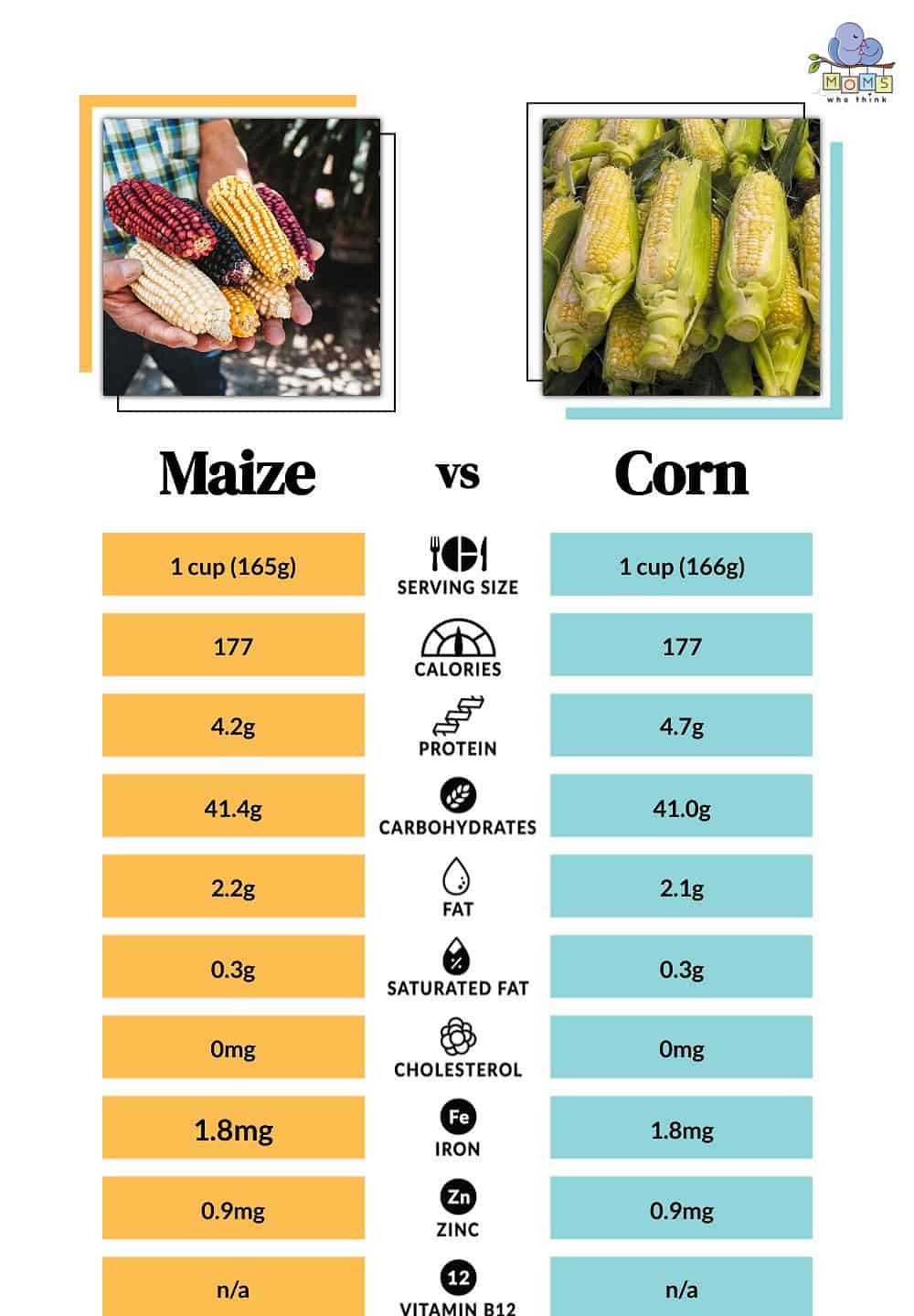
What Is Corn?
Corn is a cereal grain that is grown from the seed of a grass family plant. Through careful breeding over the years, the corn that we know today was created. With more food energy and carbohydrates than any other crop, corn is currently one of the most significant food crops in the world. More acreage than any other commercial food crop is used for corn farming.
Corn is a critical component in producing adhesives and insulation, as well as a filler for plastic. Additionally, corn is used to make solvents, paints, dyes, explosives, and different compounds. In the creation of numerous medicines, the pharmaceutical industry uses corn. The antioxidants present in corn improve eye health. Corn is also a cattle feed. Ethanol, a vehicle fuel, comes from corn. Did you know that processed corn can make plastics?
Over time, it has been less common to refer to the main crop in the area as “corn.” Germans no longer use the name to refer to wheat, nor do people in England. However, in culinary contexts, “corn” refers to the fruit picked; in formal, scientific, and international contexts, “maize” refers to crops still on the farm.
Types of Corn
Most of our corn is not buttered and salted on the dinner table, despite being farmed in a broader area of the planet than any other grain. The following are types of corns;
- The type of corn that is grown most frequently is field corn. Named after the dent that develops in each dried kernel, this variety of maize makes corn syrup, manufactures goods, and fuels automobiles.
- Dent corn contains less starch and more sugar than sweet corn. This variety of corn is eaten on or off the cob, not as a grain.
- “Baby corn” refers to maize harvested while young and sparse. It is farmed primarily in Thailand and supplied to countries worldwide in cans or jars. It is popular in some forms of Asian cuisine.
- Popcorn is a type of maize that, when heated, pops into a delightful, white, fluffy mouthful. You can obtain popcorn from a carefully bred variety of maize that does not pop in all types.
- Flint corn gets its name from how hardy it is. It is a colorful maize, precisely as it was when it was grown by native populations. There are occasions when flint corn is Indian corn.

©Prostock-studio/Shutterstock.com
Health Benefits of Corn
- High levels of vitamins and minerals found in corn can positively impact one's health.
- Corn is naturally gluten-free, making it an excellent choice for people with celiac disease or gluten intolerance.
- Compared to many vegetables, corn contains higher protein, a necessary component of skin, muscles, and bones. Vegans and vegetarians can increase their intake of maize to ensure they get enough of this essential component.
- Antioxidants, particularly carotenoids in corn, help people stay healthy and stave off chronic illnesses like cancer and heart disease.
- Fiber, which helps with digestion, maintaining a healthy weight, and promoting longevity, is abundant in corn.
- Because maize is gluten-free, it is an excellent food for gluten-intolerant people to have a healthy, balanced diet.
- Most other naturally occurring plant-based food sources are more expensive than corn, making it possible for low-income people and those in developing nations to obtain affordable nutrition.
Health Hazards of Corn
- Corn is susceptible to contamination by fungi that can release poisons/toxins. Additionally, consuming corn that contains these chemicals increases your risk of developing several malignancies and lung problems.
- Maize has a lot of carbohydrates but little protein, so if you consume maize, you should also eat other high-protein foods.
Recipes That Include the Use of Corn
After being produced and harvested, you can make corn into various goods. Corn or maize may be used for the following human consumption purposes:
Enjoy dented dried maize to make cornmeal. It is available in yellow or white varieties. Everything from cornbread to corn tortillas is a product of cornmeal. You can also use it in gluten-free cooking as corn flour.
The starch extracted from maize kernels results in cornstarch. It's also known as maize flour in various regions of the world, which is perplexing, we grant you. From soups and stews to pies and puddings, cornstarch thickens a variety of foods.
A thick liquid made from cornstarch, corn syrup is a common ingredient in processed meals. Why? Because it improves texture, increases volume, and enhances flavor.
Make traditional Mexican hominy from dried corn kernels treated with an alkali, like lime or lye. Hominy can be consumed whole, as cornmeal, or as grits.
A typical Southern grit recipe is to cook white cornmeal in water, frequently offered as breakfast items with butter or cheese. Hominy is used to make some grits.
Italian polenta is a hearty, thick porridge made using cornmeal as the main ingredient. Dent corn, unlike flint corn, is not the best when making real polenta.
In addition to food, corn/maize is used in a wide range of non-edible items, such as solvents, explosives, chemicals, paints, polymers, fuels, and paints. As noted, maize is also widely employed in biological and genetic research.
So What’s the Difference Between Corn and Maize?
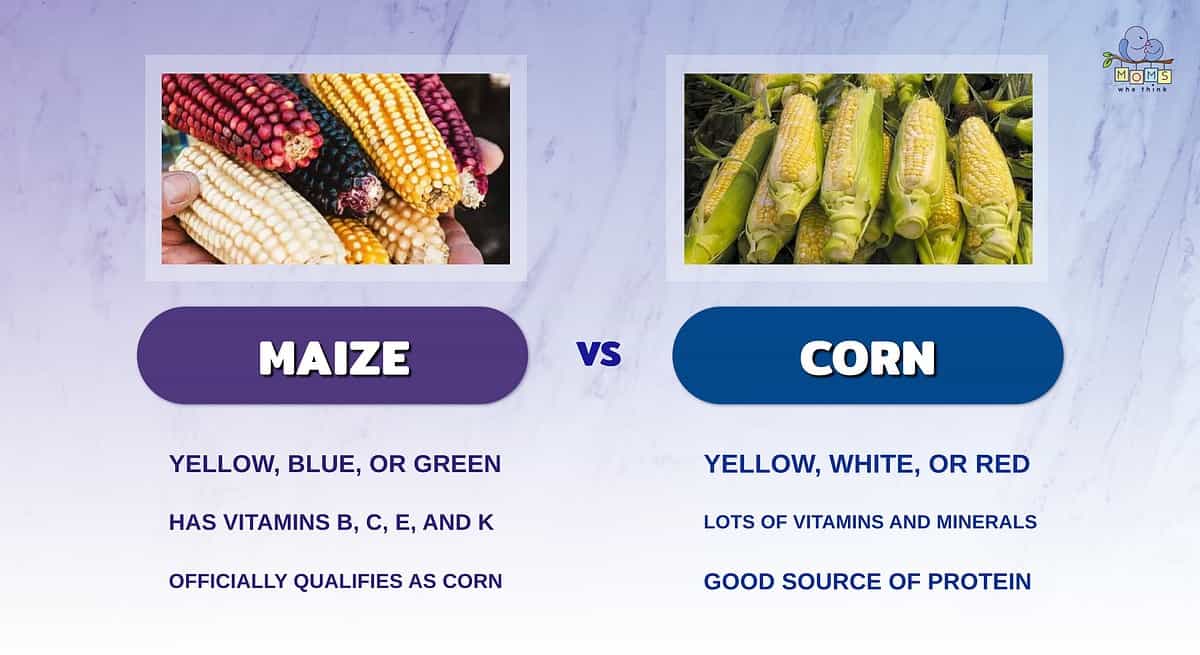
When referring to the crop in its agricultural setting, the word “maize” is frequently used. Farmers plant maize, mainly for food purposes, and sell it as corn to various locations. Though not all corn is maize, remember that all maize officially qualifies as corn.
Therefore, maize, known as corn, is one of the most loved staple foods worldwide. They are a significant part of the diet because of the plant's agronomic flexibility, which makes it simple to store grains and turn them into flour for savory, intriguing, and gratifying cuisines. Maize is also one of the most significant sources of protein and carbs in most nations.
Print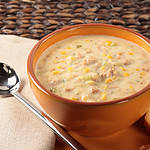
Sausage-Corn Chowder
- Total Time: 45 minutes
Ingredients
- 12 ounces reduced fat sausage
- 3/4 cup chopped onion
- 1 can (10 3/4 ounce) condensed chicken soup with herbs
- 1 3/4 cup milk
- 1 can (15 ounces) cream corn
Instructions
- In large saucepan, cook sausage and onion, breaking sausage up into small pieces, drain fat.
- Combine soup and milk until smooth.
- Add to sausage along with the corn.
- Cook until heated through.
- Prep Time: 15 minutes
- Cook Time: 30 minutes
